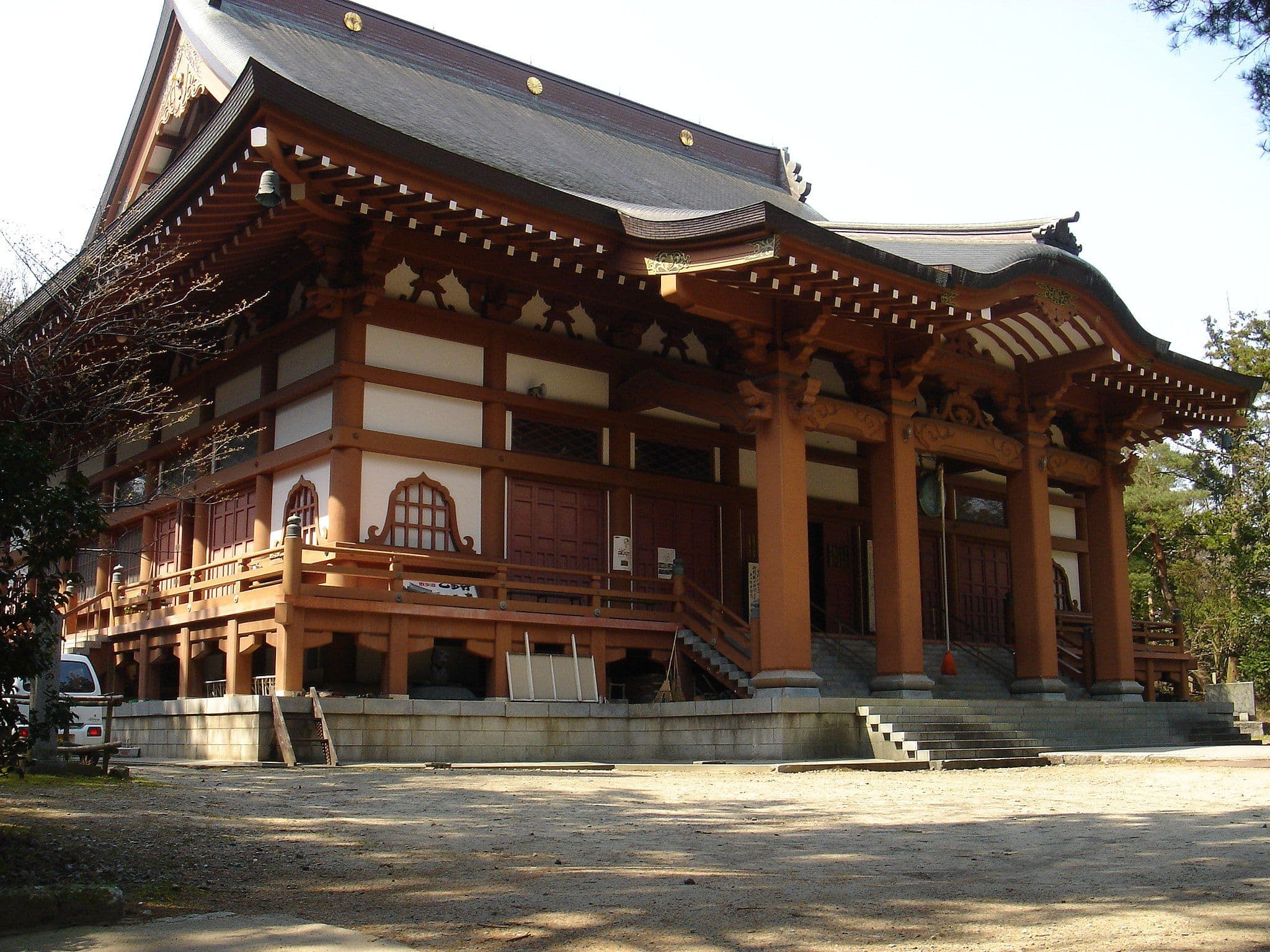
Oppoji Temple
乙宝寺In 736, Oppōji Temple was founded under the imperial decree of Emperor Shōmu by two eminent monks: Gyōki Bodhisattva and the Brahmin Sōjō. At the heart of this seven-hall temple complex stands the Kondō (Main Hall), where three principal Buddhas are enshrined: Dainichi Nyorai of the Womb Realm (Taizōkai), Amida Nyorai, and Yakushi Nyorai.
According to legend, the Brahmin Sōjō, an Indian monk, enshrined a relic of the Buddha’s left eye at this temple, giving rise to the name Otsu-dera (乙寺). A corresponding right eye relic was enshrined in China at a temple known as Kō-dera (甲寺).
During the Heian period, Emperor Go-Shirakawa is said to have donated a golden pagoda to house the left-eye relic, after which the temple came to be known as Oppōji Temple. In a later era, the warlord Uesugi Kenshin is said to have worshipped here and received a fragment of the relic, placing the temple under the protection of the Uesugi clan.
It is also well known that on July 1, 1689, the poet Matsuo Bashō visited this temple during his journey recorded in “The Narrow Road to the Deep North”. Even then, the temple was famed for its cherry blossoms. Bashō composed a haiku in praise of them, and a stone monument inscribed with his verse still stands on the grounds.
Legends of Oppōji
Many legends are associated with the temple, including the Monkey Legend, the Three-Story Pagoda Legend, the Ōtori Pond Legend, and the Niō Gate Legend. Among them, the Monkey Legend is particularly well known. It appears in the Konjaku Monogatari-shū, a collection of tales from the Heian period.
The story tells of two monkeys living in the mountains behind the temple who asked the head priest to copy sutras onto tree bark (mokuhikyō). Through the merit of this act, they were reborn as humans - one eventually becoming a provincial governor in Echigo. Because of this tale, the temple became known by the nickname Saru Kuyōji (“Temple for Monkey Memorials”). A grave for the monkeys (Saru-zuka) and the bark sutras they copied are still preserved. The rakugo storyteller Sanyūtei Enshō later adapted the story into a humorous piece titled Shakyō-zaru (“The Sutra-Copying Monkey”).
Temple Grounds and Sacred Structures
The grounds of Oppoji Temple span approximately about 82,500 square meters, and are further surrounded by a forest area of roughly 15 hectares. Within these expansive grounds, many temple buildings and structures remain.
Dainichidō (Kondō): This is the main hall of Oppō-ji Temple. The original Dainichidō, rebuilt in 1745, was lost to fire in 1937. The current structure is a faithful reconstruction completed in 1983, built to the same dimensions as the previous hall - about 27 meters on each side. The principal deities enshrined are Dainichi Nyorai, Amida Nyorai, and Yakushi Nyorai. Prayers for the fulfillment of wishes are offered here.
Hōjō-den (Shingondō): Referred to as the “Dream Hall of the Heisei Era”, the Hōjō-den is a reconstruction of the original hall, which was destroyed by fire in 1893. The current building was completed in 1995, with Fudō Myōō - one of the Five Great Wisdom Kings - enshrined as the principal deity. Built using traditional construction techniques, it faithfully follows the pure Japanese architectural style of the medieval period. While the Dainichidō serves as a hall for prayers and wish fulfillment, the Hōjō-den is devoted to Shingon Esoteric Buddhist practice, focusing on the purification of sins and deep self-reflection.
Three-Story Pagoda: A nationally designated Important Cultural Property, built in 1620 through the donation of Suō-no-kami Tadakatsu (Murakami Tadakatsu), lord of Murakami Castle. The pagoda features pure Japanese architectural style with beautifully lined persimmon bark roofing. Inside is a statue of Samantabhadra Bodhisattva (Fugen Bosatsu), the guardian deity for those born in the years of the Dragon and Snake.
Niōmon Gate: Renovated in 1745, using old timber from the original main hall (Kondō) built in Nara. The guardian Niō statues are said to be the work of the monk Gyōki. The mountain name plaque “Nyoi-zan” was inscribed by Unshō, the seventh head priest of Chishaku-in Temple in Kyoto’s Higashiyama district.
Jizō Hall: Enshrining Jizō Bosatsu as its principal deity, this hall is also known as “Hall of a Thousand Jizō” (Sentai Jizō-son). It houses memorial tōba (wooden grave tablets) dedicated to deceased children (mizuko) who have been memorialised at this temple. Devoted worshippers of all ages continue to visit and offer prayers with deep reverence and compassion.
Kannon Hall: This hall enshrines Nyoirin Kannon (Cintāmaṇi-cakra Avalokiteśvara) as its principal deity. It is also the 26th temple of the Echigo 33 Kannon Pilgrimage, making it a significant stop for pilgrims in the region.
Rokkakudō (Hexagonal Hall): Rebuilt during the Enkyō era (1744–1748), this hall enshrines Shakyamuni Buddha as its principal deity. Beneath it lies the foundation stone of a five-story pagoda that once housed a sacred Buddha relic passed down at the temple. The hall is also known as the “Hall of Ties”, and is believed to bring blessings for fulfilling romantic and personal connections.
At Hey Japan!, we strive to keep the places listed on our website as current as possible. However, it is important to note that location owners or management may make changes to their plans, including canceling events, altering opening times, or modifying admission requirements, without prior notice. To ensure that you have the most accurate information, we recommend checking official websites before visiting any location.
Last Updated:













